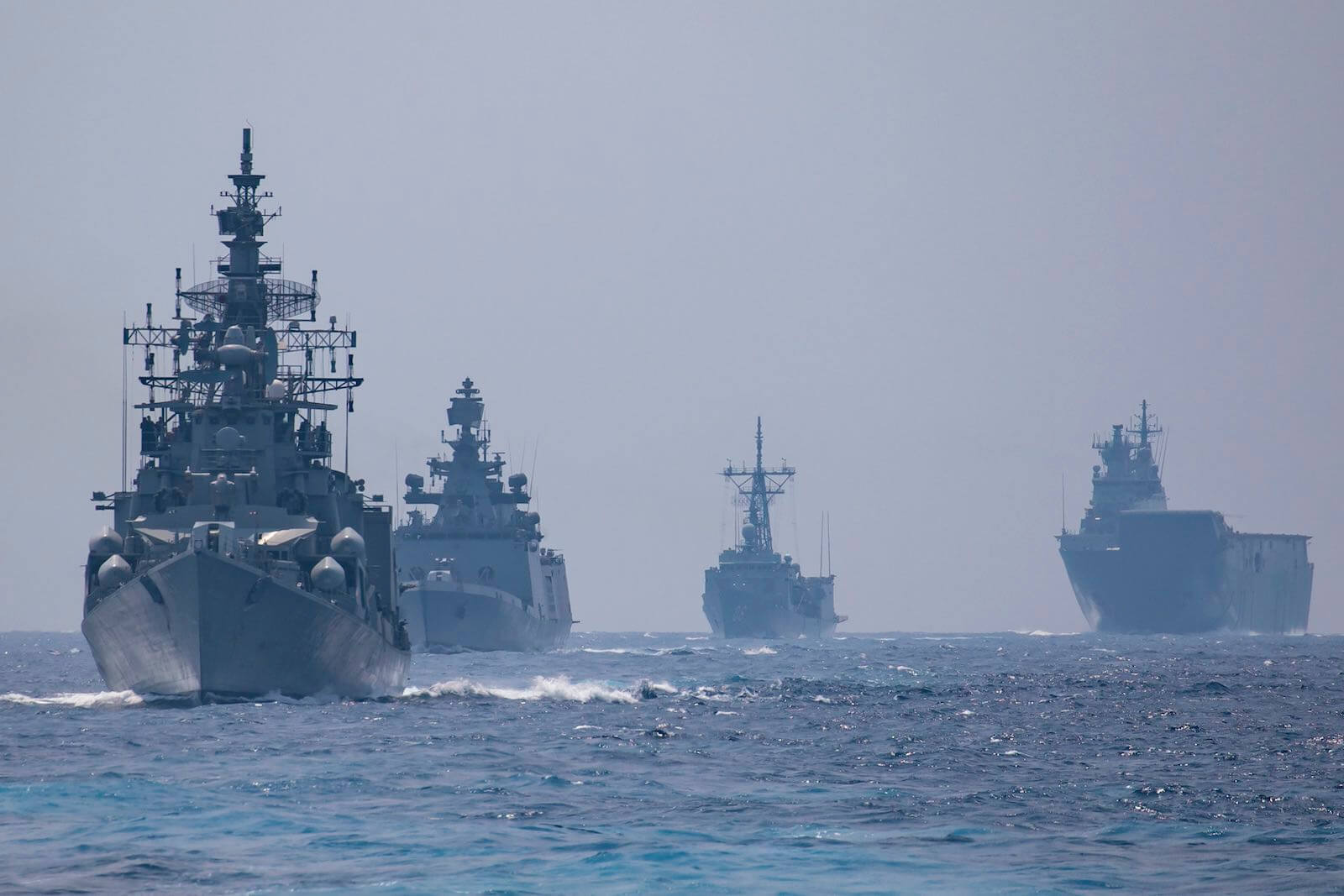Reports suggest that India intends to extend its support to invite Australia to participate in the Malabar naval exercise. The annual exercise is conducted between the naval forces of India, the United States, and Japan. The invitation to Australia will be confirmed next week, following “clearance and consultations” with the relevant American and Japanese authorities.
Also Read: The China Factor in India’s New Maritime Agreements With Australia
If the developments progress as planned, the navies of the four countries, who are members of the “Quad”, will come together in the Bay of Bengal at the end of 2020. According to Derek Grossman, a researcher at the RAND Corporation, said, “The timing of India potentially letting Australia into Malabar would be especially significant at this juncture … It would send a significant message to China that the Quad – US, Australia, Japan, and India – are de facto conducting joint naval exercises, even it not technically conducted under the auspices of a Quad event.”
The Malabar exercises were first instituted in 1992 and only included cooperation between Indian and American naval forces. In 2015, when Japan was made a permanent member of the practice, China vehemently opposed the decision and warned the countries involved to refrain from “[provoking] confrontation and [creating] tensions”. Similarly, China is likely to be irked by the extension of the invitation to Australia. In fact, China had objected to the exercise in 2007, when Australia participated in the exercise along with India, the US, Japan, and Singapore after it requested “observer status” in the Malabar exercise.
Since then, Australia has been pushing for inclusion into the alliance. While the US and Japan have been urging India to accept this, until recently, India has been resistant to Australia’s participation. However, with the recent strengthening of ties between Australia and India, New Delhi appears to have changed its position. Over a month ago, during a virtual summit, Indian Prime Minister Narendra Modi and Australian PM Scott Morrison announced a joint decision to elevate the two countries’ relationship from a Strategic Partnership to a Comprehensive Strategic Partnership (CSP). The two leaders inked nine agreements, including the “Shared Vision for Maritime Cooperation in the Indo-Pacific” and a Mutual Logistics Support Agreement (MLSA). All in all, Modi and Morrison signed nine agreements, comprised of two ‘bilateral strategic declarations’ on cooperation in the Indo-Pacific and seven other pacts.
Also Read: Modi and Morrison Deepen India and Australia’s Strategic, Diplomatic, and Economic Ties
The four countries have been increasing their cooperation in the Indo-Pacific region to counter Chinese forces in the region. Towards the end of June, the Indian Navy and the Japanese Navy conducted military exercises in the Indian Ocean to increase the two forces’ interoperability. The practice involved the INS Rana and INS Kulush training vessels from India, and the JS Kashima and JS Shimayuki from Japan. However, soon after this exercise, the Japanese coast guard reported aggressive actions by the Chinese navy. They reported the “intrusion” of Chinese patrol ships into Japanese waters, who remained there for 30 hours despite several warnings by their Japanese counterparts.
Also Read: India and Japan Conduct Naval Exercises in Indian Ocean
As the “Quad” increases their cooperation in the Indo-Pacific region, they must prepare for further aggressive retaliation by Chinese forces.
Image Source: Lowy Institute

